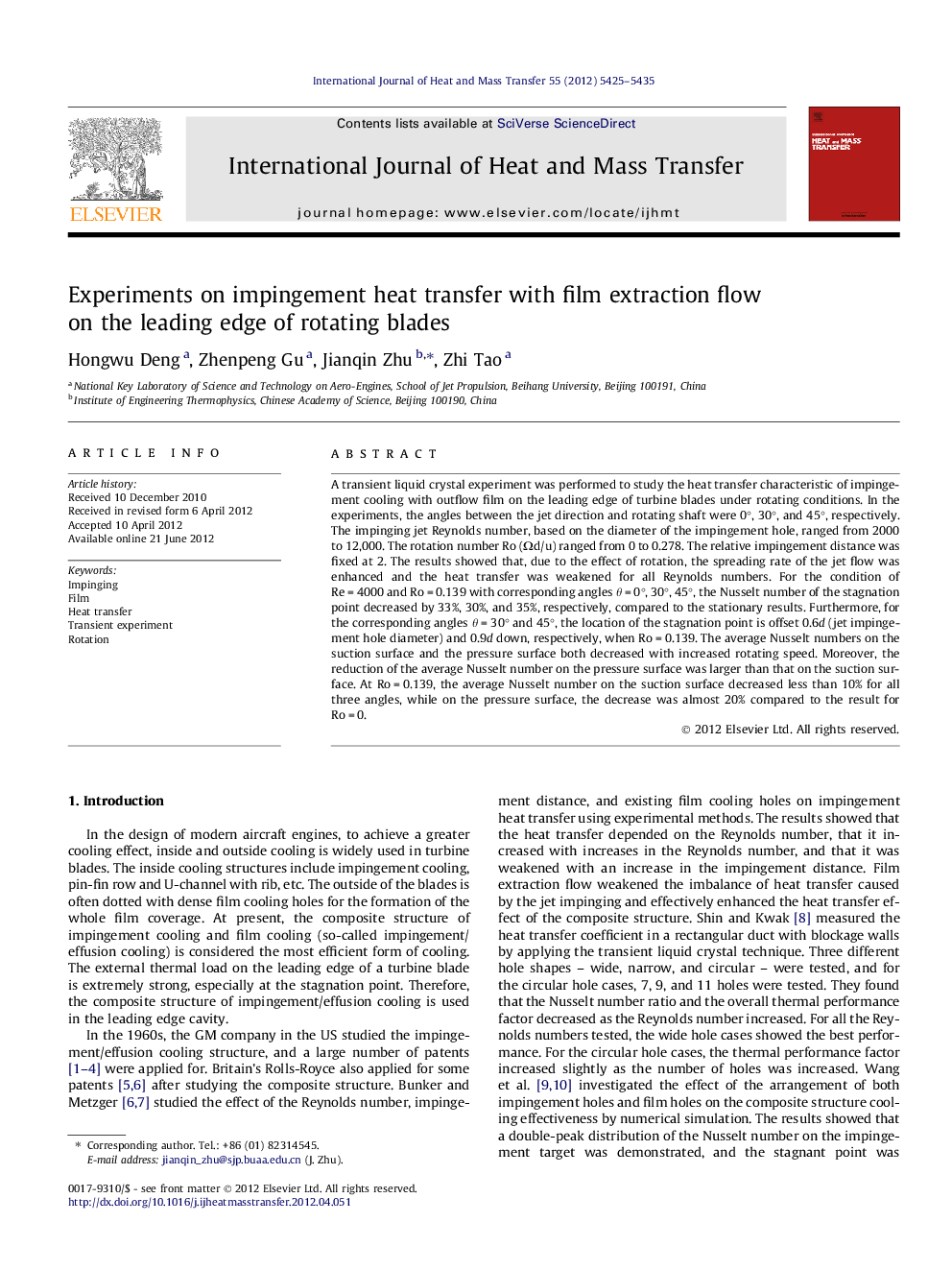| Article ID | Journal | Published Year | Pages | File Type |
|---|---|---|---|---|
| 659106 | International Journal of Heat and Mass Transfer | 2012 | 11 Pages |
A transient liquid crystal experiment was performed to study the heat transfer characteristic of impingement cooling with outflow film on the leading edge of turbine blades under rotating conditions. In the experiments, the angles between the jet direction and rotating shaft were 0°, 30°, and 45°, respectively. The impinging jet Reynolds number, based on the diameter of the impingement hole, ranged from 2000 to 12,000. The rotation number Ro (Ωd/u) ranged from 0 to 0.278. The relative impingement distance was fixed at 2. The results showed that, due to the effect of rotation, the spreading rate of the jet flow was enhanced and the heat transfer was weakened for all Reynolds numbers. For the condition of Re = 4000 and Ro = 0.139 with corresponding angles θ = 0°, 30°, 45°, the Nusselt number of the stagnation point decreased by 33%, 30%, and 35%, respectively, compared to the stationary results. Furthermore, for the corresponding angles θ = 30° and 45°, the location of the stagnation point is offset 0.6d (jet impingement hole diameter) and 0.9d down, respectively, when Ro = 0.139. The average Nusselt numbers on the suction surface and the pressure surface both decreased with increased rotating speed. Moreover, the reduction of the average Nusselt number on the pressure surface was larger than that on the suction surface. At Ro = 0.139, the average Nusselt number on the suction surface decreased less than 10% for all three angles, while on the pressure surface, the decrease was almost 20% compared to the result for Ro = 0.
